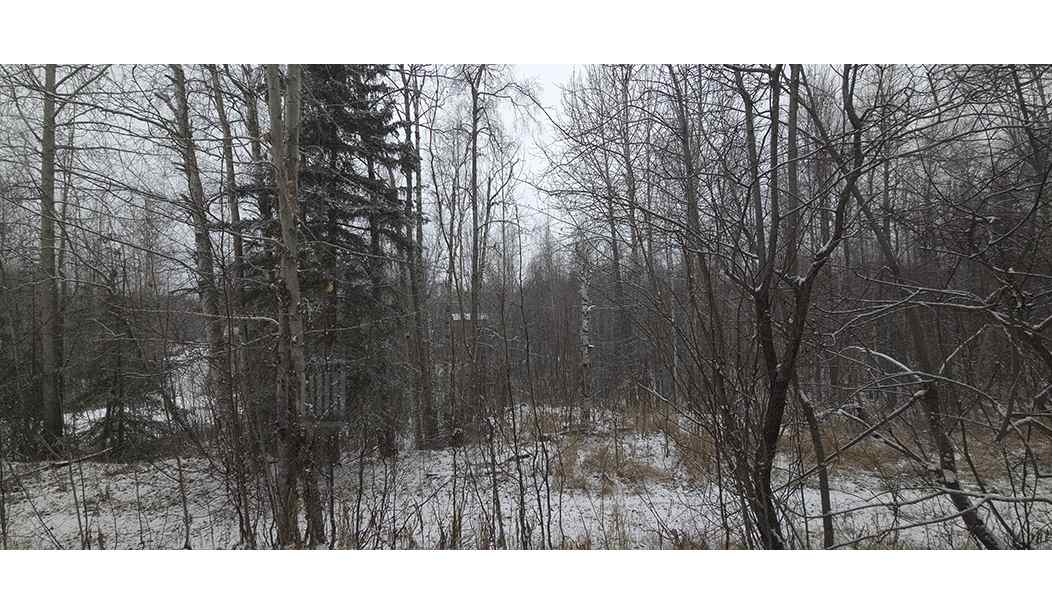In most, if not all, places that have serious winter weather, certain traditions come with the first snow. When I was a little tad back in Allamakee County, Iowa, winter had us housebound a good part of the time, and that was a time when my grandfathers and my Old Man would spin stories - some fantastical tales (my maternal grandfather once had me convinced that there were flying snakes on his farm) and some stories of their own youths. Given that my grandfathers were born in the last decade of the 19th century, they had some interesting tales to tell.
Alaska is no exception. As I write these words, outside my office window, the first serious snowfall is coming down. Over the next 24 hours, we are told to expect six to eight inches of snow as Alaska prepares to sleep under a blanket of white until spring. And, once again, it's time to tell some stories, and I tell you what, I'm a storyteller myself, and Alaska has some great ones.
Full disclosure: I do not and will not accept the existence of any of these creatures without physical evidence. I'm funny like that. But that doesn't make the stories any less fun. And in the first such fun - well, interesting - story, I bring you Portlock's killer Bigfoot.
The residents of this shipping and canning port abandoned Portlock around 1950 in favor of towns built closer to the new Alaska Route 1 state highway. Portlock, nestled on the southern edge of the Kenai Peninsula along Port Chatham bay, was no longer practical as a place to call home.
At least, that’s the official story.
Urban legends, on the other hand, claim the residents fled en masse from Portlock because of a a huge, hairy, half-man, half-beast who started stalking and attacking residents of the town. The beast, reminiscent of Bigfoot (or Sasquatch), was known to the locals as Nantiinaq.
Is it an "urban" legend when it takes place in a barely-there bush village in Alaska? "Tall tale" seems a more apt description. But this one, I admit, has a twist. Most Bigfoot stories describe a rather inoffensive beast, except for one short-tempered brute featured in beef jerky commercials. The Portlock Bigfoot Nantiinaq, however, is implicated in the disappearances of some people. Does he eat them? Where did these people go?
Nantiinaq was rumored to be responsible for dozens of mysterious deaths and disappearances of town inhabitants from the early 1900s until the town was abandoned in the 1950s. So what actually happened in Portlock?
Here's the thing: Even today, in the 21st century, when we have satellite coverage over the entire planet, the Alaska bush swallows people up almost every year. People get lost, and people disappear; in some cases, no trace is ever found. Alaska is vast on a scale that some people, even many Alaskans, find hard to wrap their heads around. When I lived in Colorado, I was sometimes bemused by knowing there were places in that state where one could leave a road and walk in a certain direction for 20-30 miles before encountering another road. In Alaska, there are places, many of them in fact, where you can walk for hundreds upon hundreds of miles and never encounter another road - or another human. No cryptid is required for people to disappear. It's sad, and it's mostly preventable, given a few active brain cells, but it happens.
Not all Alaska creatures of legend are big and imposing, as it happens. On the other end of the size spectrum, we also have Alaska's gnomes.
Everyone seems to have a different take on the Little People, as this lore has been consistently mentioned in nearly every arctic village I’ve been.
The Little People bear striking resemblance to other cultures’ tellings of fairies, dwarves, gnomes, goblins, leprechauns, brownies, and halflings. Magical races of diminutive stature, all. And each possessed of protective benevolence or spiteful vengeance, depending on the story.
Alaskans’ perceptions on this topic range the gamut from nonchalant to amused, but occasionally you meet folk that get emotional about the Little People. Displays of anger, sadness, fear, or whimsy have each intrigued and keep me consistently curious. Most of the experiences I’ve heard came second- or third-hand from villages north of Nome, in Northwest or the North Slope.
My mother and one of my sisters were into Celtic mythology, as that's a big part of our family's ethnic background, and I picked up their interest when I was pretty young. As you may know, Celtic mythos is full of tales of faeries, spriggans, gnomes, leprechauns, selkies, and so on. Some of those creatures were friendly, and some - like the goblin Redcap - were downright murderous. Alaska's gnomes seem to cross the spectrum but lean towards malevolence.
The unanimous belief in Shaktoolik was that anyone who caught sight of the Little People would go missing for at least a year. Supposedly, these poor souls spend the year underground in captivity and occasionally never come back. Some people I spoke with were convinced that the missing ones were eaten or enslaved; others believed they’re enjoying life among the Little People and now peacefully live with them underground.
See above; sadly, I'm more inclined to believe there are more down-to-earth reasons for these disappearances. One has to wonder - are these tales some way to deal with the disappearance of a loved one? The idea that they didn't just disappear into the bush, but that they are living a simple life among fantastical beings? People are hard-wired for rationalization, it seems. While I know people - good friends, in fact - who live nearby here in the Susitna Valley and who swear by the existence of the gnomes, as always, I'll believe it when someone brings one in.
See Related: Bigfoot Makes His TikTok Debut. Except, It Isn't Bigfoot. Bigfoot Doesn't Exist.
Aspiring Sasquatch Hunter Has Legality Questions - Game Regs Are Ambiguous on Cryptids
Finally, there are many Alaskan native legends. Many are told among the Inuit tribes, and some of them may well have come across the Bering land bridge with the Inuit's forebears. Some of these legendary creatures include:
The Qalupalik: A semi-aquatic, green-skinned creature that entices children into the water and steals them away. While my grandfather was fond of pointing out that "...the kids that grow up along the river are never the ones who drown," it's easier to see a natural explanation for people disappearing near a body of water.
The Tornit: This is, apparently, a Bigfoot-like creature that goes back in Inuit legend since time immemorial. Legend has it that they once lived alongside the Inuit and shared hunting grounds, but that relationship has soured over the years since.
The Adlit: These are a race of werewolf-like beings, again from Inuit legend. They have the lower body of a dog and the upper of a human and are said to attack any human they encounter.
The Tizheruk: These creatures are a kind of sea serpent, who roam Alaska's coastal waters and will grab humans who stray too close to the water's edge. Can you think of a better tale for keeping kids away from the surf?
The Keelut: Picture a black dog with no hair except on its feet, and you've got an idea of the Keelut. They will follow people encountered at night, and stalk and kill them. It's not surprising, in a land like Alaska where so many big, toothy predators are around, including wolves and bears, that such a legend might come about.
Tall tales and legends are fun. I've told more than a few myself - I am a grandfather, after all, and spinning tale tales and fireside yarns are an essential part of grandfathering. I'm a storyteller above all things, and I appreciate the persistence of these old legends, many of which seem to go back thousands of years.
But tall tales and fireside yarns are all they are. As far as the actual, by-gosh existence of these critters? I'll believe it when I see it.













